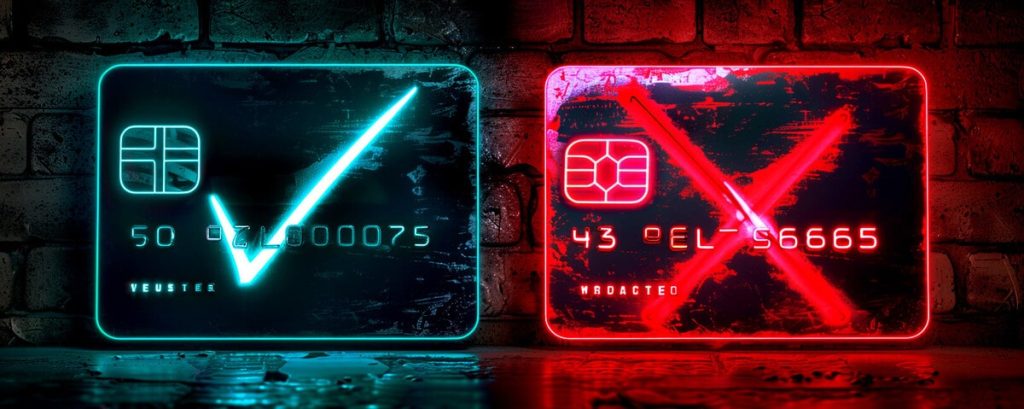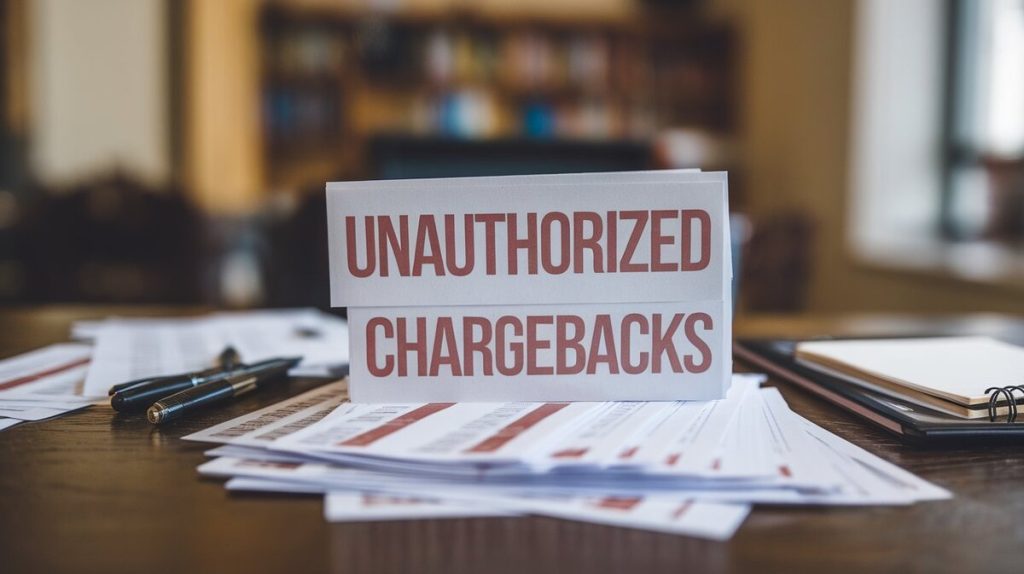Chargebacks are a significant problem for online merchants, often resulting in revenue loss and operational disruptions. Unauthorized chargebacks can occur due to fraud, errors, or disputes, bypassing the merchant and leading to automatic refunds through card issuers. Addressing these effectively requires a solid understanding of why they happen and what actions can minimize them.
1. Understanding Unauthorized Chargebacks
Unauthorized chargebacks occur when customers dispute a legitimate transaction, either due to misunderstandings, errors, or fraudulent activity. In 2022, chargebacks cost merchants $125 billion globally, with most cases stemming from fraud or customer dissatisfaction (Mastercard). A chargeback can be initiated for several reasons:
- Fraudulent Transactions: A transaction completed using stolen card information.
- Friendly Fraud: When customers dispute a legitimate transaction without seeking a refund from the merchant.
- Merchant Errors: Incorrect product delivery or failure to meet expectations.
2. Methods to Prevent Chargebacks
Preventing chargebacks requires both technology and transparent business practices. Fraud detection tools, clear communication, and efficient customer service play critical roles. Merchants must implement measures that reduce risk without adding friction to the customer experience.
Transaction Accuracy
Ensuring the accuracy of transactions reduces the risk of disputes. Some practical methods include:
- Employee Training: Train employees on proper transaction handling and customer service to avoid costly mistakes.
- Fraud Detection Tools: Advanced fraud detection systems flag suspicious transactions using machine learning algorithms. According to Visa, such tools can reduce fraud by 30%.
- Address Verification (AVS): Implement AVS to confirm the billing address, preventing unauthorized purchases.
Clear Communication
Clear and upfront communication helps prevent misunderstandings that lead to chargebacks. Practices include:
- Detailed Product Descriptions: Accurately describe products to prevent customer confusion.
- Transparent Pricing: Ensure customers understand all fees, including recurring charges.
- Easy Refund Policies: Display clear return and refund policies to reduce unnecessary disputes. Simple refund procedures can reduce chargebacks by up to 15%.
Fraud Detection Systems
Preventing fraud requires robust tools and systems that catch issues before they escalate into chargebacks. Important tools include:
- Two-Factor Authentication (2FA): Reduces unauthorized access by requiring a second authentication method for risky transactions.
- Biometric Verification: Used for mobile transactions, fingerprints or facial recognition can add a layer of security.
- Risk Scoring: Machine learning algorithms, used by systems like Stripe, assign risk scores to transactions, flagging potential fraud in real time.
Table 1: Key Factors in Chargeback Prevention
| Factor | Impact | Prevention Method |
|---|---|---|
| Fraudulent Transactions | Unauthorized purchases | AVS, 2FA, machine learning algorithms |
| Friendly Fraud | Customers disputing valid transactions | Clear billing, fast customer service |
| Merchant Errors | Errors during transaction or product delivery | Employee training, accurate information |

3. Leveraging Payment Processing Partnerships
Choosing the right payment processing platform can play a crucial role in reducing chargebacks. Many platforms, such as Merchanto.org, an official partner of Visa and MasterCard in chargeback prevention, offer specialized tools designed to protect merchants. Merchanto.org provides real-time chargeback alerts, fraud detection, and streamlined dispute resolution. They help businesses minimize the damage from chargebacks by providing effective tools and resources. Visit Merchanto.org for more information.
Handling Chargebacks When They Occur
While prevention is key, it’s important to respond effectively when chargebacks do happen. According to Mastercard, businesses that respond to chargeback disputes within 7 days are 50% more likely to win the dispute.
Key steps include:
- Evidence Collection: Maintain records such as delivery confirmations, order information, and customer communications.
- Responding Quickly: Submit all relevant evidence promptly to the card issuer.
- Monitor Disputes: Keep track of ongoing disputes to ensure all documentation is properly handled.
Table 2: Chargeback Dispute Process
| Process Step | Timeline | Action |
|---|---|---|
| Chargeback Initiation | 1-2 Days | Customer submits dispute to bank |
| Merchant Notification | 3-5 Days | Merchant receives notice of the chargeback |
| Evidence Submission | 7-14 Days | Merchant gathers and submits transaction evidence |
| Resolution | 30-45 Days | Bank makes a decision based on evidence |
4. Role of Payment Gateways
Payment gateways now offer more than just transaction processing. Many, such as Checkout.com and Braintree, provide advanced fraud detection, real-time alerts, and integrated dispute management tools that streamline the chargeback handling process. Using such gateways can help merchants reduce chargebacks and monitor trends that lead to disputes.
Important Features for Chargeback Management
- Fraud Detection Alerts: Real-time alerts flag suspicious activities before they escalate into chargebacks.
- Chargeback Analytics: Analytics allow merchants to identify trends and address recurring issues.
- Integrated Dispute Management: Payment gateways simplify evidence submission and provide tools to monitor the status of disputes.
These tools help merchants reduce manual workloads and keep chargeback ratios within acceptable limits.

Table 3: Key Payment Gateway Features
| Payment Gateway | Key Features | Effect |
|---|---|---|
| Stripe | Risk-based transaction monitoring | Reduces chargeback incidents by up to 40% |
| Checkout.com | Real-time fraud alerts | Immediate notification of risky transactions |
| Braintree | Integrated dispute management | Simplifies evidence gathering and submission |
5. Long-Term Impact of Reducing Chargebacks
Maintaining a low chargeback rate benefits your business by avoiding penalties and ensuring you maintain good standing with payment processors. Excessive chargebacks, typically above 1%, can result in high fines or even account termination by Visa or MasterCard.
Consequences of High Chargeback Ratios
- Increased Fees: Merchants may face higher transaction fees if chargeback ratios rise.
- Risk of Termination: Exceeding a 1% chargeback rate can lead to payment processors terminating your account.
- Higher Costs: High-risk accounts may be subject to higher fees and stricter conditions, including larger reserve requirements.
By reducing chargebacks, merchants not only protect their revenue but also preserve their ability to continue processing payments under favorable terms.
Conclusion
Chargebacks pose a significant financial risk for online merchants. By adopting preventive strategies like fraud detection systems, ensuring accurate transaction processing, and maintaining clear communication with customers, businesses can reduce the risk of chargebacks and protect their revenue.
Understanding and addressing the causes of chargebacks, and knowing how to handle them effectively when they occur, is essential to maintaining a healthy business in the competitive eCommerce landscape. Focus on accuracy, transparency, and technology to ensure your business remains protected.



